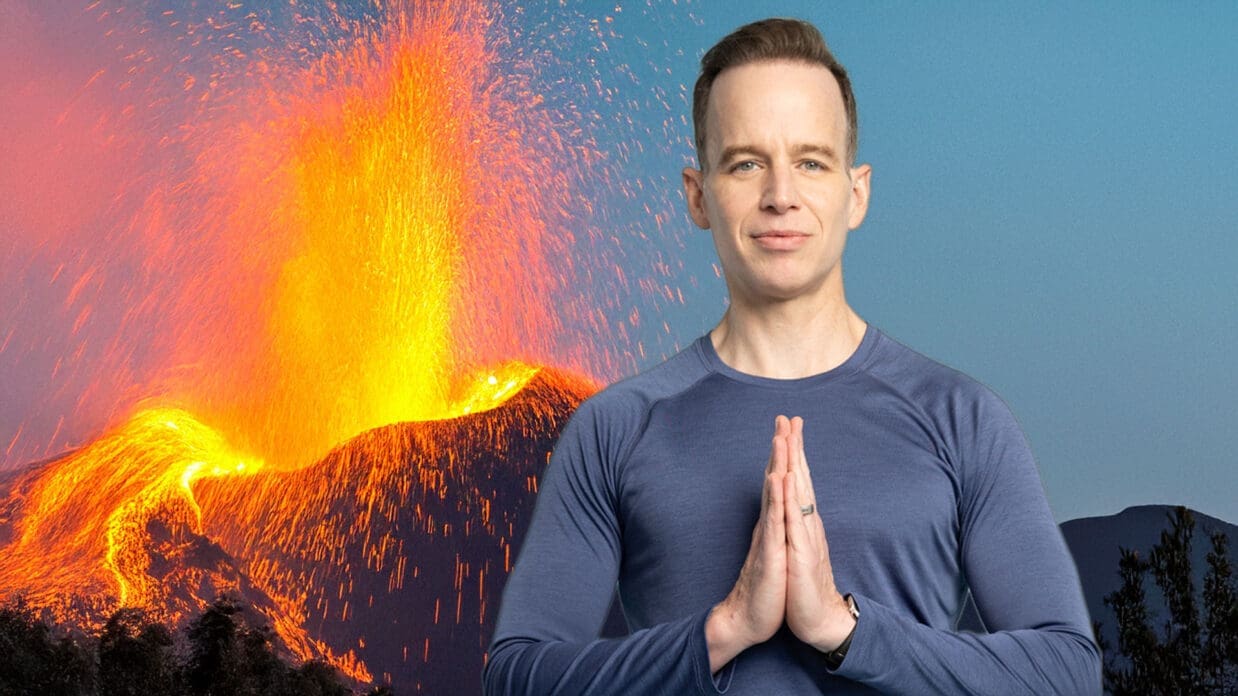Not long after I’d started teaching yoga, a colleague came to take one my classes. Afterwards, I asked for constructive feedback (she’s more experienced than I am), and she said it was good but that I seemed really distracted.
She was totally right. You see, directly outside of the yoga studio was an event space, and — on that particular night — a party was being set up during class, and I found myself trying really hard to maintain my calm “yoga voice” and focus while, inside, I was fuming that this was taking away from my class. So much so that I frequently “lost my place” in the sequence I was teaching and tripped over my words a lot.
It’s not my fault!
I wish I could say that I totally understood in the moment, but my reaction was to be defensive and to place blame. “Those people” were rude and the event space “should have more respect” for my yoga class.
But in the years that followed, I’ve come to realize that — in fact — that outside chaos was a gift. It was given to me as a lesson, and I failed. Thankfully, class is always in session, and I’ve done my share of make-up work and extra credit since. (Still am.)
Chaos Outside. Calm Inside.
The aim of yoga is to calm the chaos of conflicting impulses.
BKS Iyengar
Yoga is a mind science. Yes, there are many spiritual/religious traditions — primarily Hinduism — that are inseparably woven into Yoga’s roots, but the practice of Yoga, for Patañjali, is about bringing the “fluctuations of the mind” under control. On that Sunday night all those years ago, my mind fluctuations were all over the place. They were anywhere, in fact, except for where they belonged.
The world has always been chaotic, and it always will be. In fact, the earliest practices of Hatha Yoga (of which Vinyasa is a distant descendant) evolved because quieting the mind was hard for ancient folks, too. Maybe they had eaten something that disagreed. Maybe they’d had a fight with their neighbor or partner. But sitting still was hard all those millennia ago, and it hasn’t gotten any easier.
So what do we do about it?
We breathe. Or we move. Or we move and breathe. Or we “simply” redirect our attention. (Simple. Not easy.)
If you have ever taken a challenging yoga class in which the sequence was unpredictable or the pose was held a little “too” long, then you’ve experienced what it is to be distracted and choose to direct your attention: to the standing leg, to the breath, to the drishti.
That’s exactly what the practice is for. Ultimately, the mat is a mirror: it perfectly reflects how we handle ourselves in the “real” world, and it does so in a safe space. Get annoyed at the instructor when they make you hold Garudasana (Eagle Pose) for ten breaths? Odds are, you also get annoyed when you have to stand in line at the TSA. Frustrated when you can’t balance in Bakasana (Crow Pose)? How do you react when your boss throws a new project on your already-full to-do list?
We all come to the mat for different reasons, and there’s not a “wrong” one, but — at least over time —we all leave with a deeper sense of peace, awareness, and clarity.
I still teach at that studio, and I have positioned myself further from the door to the event space (which helps), but now when it’s noisy outside, I laugh it off and encourage my fellow yogis to do the same.
Because that’s the yoga.
Nothing that appears in this blog or on this website is intended to treat or diagnose any disorder, physical or otherwise. Always consult a physician before beginning any exercise program.
